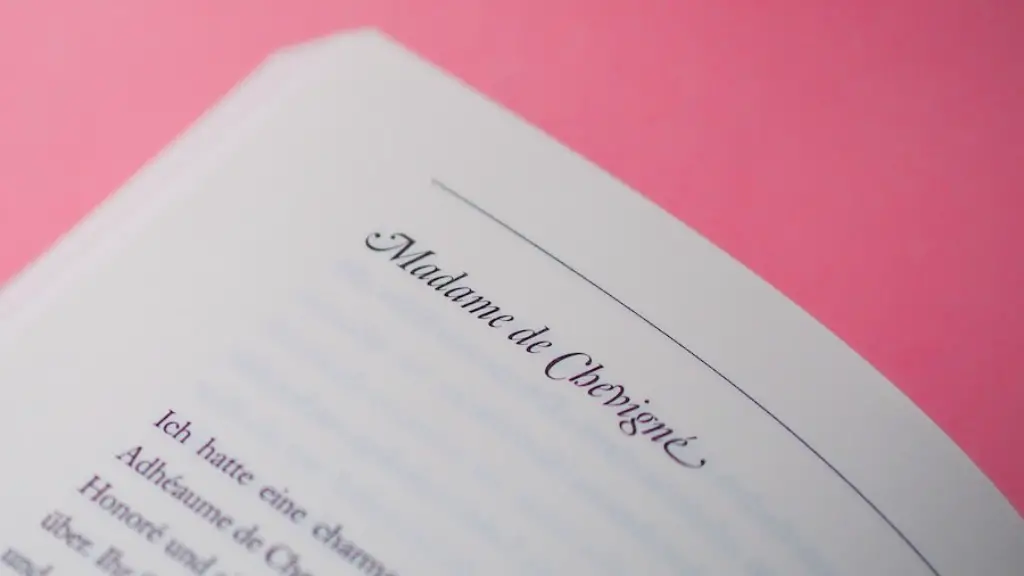Sad poetry can provide a safe space to explore difficult emotions and reflect on life changes and losses. When reading or writing a sad poem, it can conjure powerful emotions, enabling readers to face difficult topics head on and experience solace within a text that they can relate to and make sense of. Being able to identify and name emotions is key to understanding the power of a poem and its ability to allow readers to connect with the text on an earthy level.
Much of the best sad poetry uses devices such as descriptive language, analogies and metaphors to capture the raw emotions that we feel in moments of distress or despair. Words, phrases and lines of poetry can be used to make sense of a wide range of emotions. They can add depth and clarity to our inner experiences and spur us on to reach out and make connections with other people. By communicating these emotions through poetic devices, readers can be lifted out of a sadness and reach an understanding of the emotions that accompany it.
In its purest form, sad poetry evokes a sense of raw grief, pain and loss in various ways. Poets like Robert Frost and Dylan Thomas have used language to explore deeply personal and painful issues such as death, love and regret. However, sad poetry can also go beyond the physical and emotional pain experienced in loss, pointing towards a feeling of hope and longing for new beginnings. By invoking different moods and images, a poem can provide both solace and courage to readers, allowing them to reflect and gain a deeper understanding of their emotions.
Many of the most famous poets have used their poems to explore the boundaries between life and death, love and loss, and despair and hope. Through language, imagery and metaphor, these works of literature provide readers with a platform to process their own experiences in whatever way they choose. One of the most important aspects of sad poetry is its ability to connect readers to their innermost thoughts and feelings. The words create a bridge between the private and public, allowing readers to connect with each other in a shared emotional terrain.
The themes of a sad poem often center around the loss of a loved one, the experience of grief, or the stages of acceptance that come with a change in life. Sad poems can also include themes of personal acceptance and understanding of one’s own identities and emotions, or of a shared experience with another person in a relationship. Throughout time, these themes have been used to create poems that offer readers a place to feel safe in their experiences and a way to explore their feelings more deeply.
Additionally, sad poetry carries with it the power to influence social movements. Poems have been used to protest injustices and to speak out against oppressive systems and governments. Works of sad poetry can have an impact and inspire positive change, even though it may not be immediately palpable. They often enhance public awareness and energy that is necessary to promote progress and reform in society.
Have a voice
Sad poems enable readers to express emotions and ideas that are often not expressed in everyday conversations and interactions. Soul-baring, vulnerable works of literature can provide readers with a platform to share their feelings and experiences with the world in a more open and honest way, without fear of judgement.Often reading and writing poetry can provide a unique avenue to process life’s complexities with a voice, releasing tension and finding an outlet for reflection and relief.
Sad poetry delivers an important message: no one has to suffer in silence. By finding a language and form to express difficult emotions, readers can recognize the power of their own voice and the importance of allowing for deep introspection. Sad poetry can reconnect us with the potential for joy and hope on the other side of sorrow, and help us to appreciate the human experience for what it is: full of joy, sorrow, and human connection.
Focus on yourself
Sad poetry can provide a powerful tool for self-exploration and reflection. By tuning into the emotions within a work of literature, readers can gain clarity on their own experiences and develop a deeper understanding of themselves. Sad poems can be an opportunity to focus on some of the more difficult emotions without fear of judgement and help to provide a sense of grounding and meaningful inner connection.
Sad poetry can be an avenue for hope and perspective, providing clarity on the past and insight into the future. Through metaphors and imagery, poems can help readers chart a course of self-growth and personal development. By interpreting the poem in ways that make sense to them, readers can find our own unique path forward and create a vision of the future that is more defined, allowing for clarity to find meaning within one’s own story.
Sad poetry provides readers with an opportunity to make sense of the difficult emotions and parts of life that we all encounter. Whether it’s exploring the depths of despair or finding solace in the beauty of renewal, poets have been able to capture the raw truth of life and allow readers to reflect and connect with themselves and others on a deeper level. Through language, imagery and metaphor, poetry can be used to encompass the entirety of the human experience, leaving readers with a newfound understanding of their own emotions and a sense of freedom to find hope in their darkest moments.
Look For Hope
Sad poetry provides readers with an opportunity to look for the pieces of hope and beauty even in despair. Authors often explore themes of change and transition, shining a light on the potential to be found in adversity. Through symbols, metaphors, and allusions, readers can notice even the faintest glimmer of hope and inspire courage in the midst of darkness.
Often these works of literature portray life as an ongoing process with many peaks and valleys, reinforcing the idea that it’s rarely just one approach or situation that results in success, but rather a delicate balance of the ups and downs. Poets can tap into the fundamental truth that life is a complex journey and give readers the tools to appropriately address its challenges, allowing for growth and transformation even in the most difficult moments.
Sad poetry is a way for readers to connect with their emotions and to make sense of the pain and suffering of life. Through language, imagery and metaphors, authors can reveal the depths of their experiences, allowing readers to see their own lives from a different perspective. The emotions evoked by these works of literature can provide solace, comfort, and understanding in the midst of sorrow. Ultimately, these pieces of sad poetry can inspire courage, perseverance and a newfound source of hope in difficult times.
Finding Balance
Sad poetry can provide readers with a way to explore the dilemma between joy and sorrow. Poems often reflect on life’s complexities, showing readers that there are no easy answers when it comes to finding balance between the two. Many authors have used their poetry to capture the idea that pain and sorrow can coexist with joy and beauty, offering readers a way to take control of their own lives and emotions.
Many timeless works of literature have explored the conflicting emotions of joy and sadness found in the human experience. As readers navigate these texts, a powerful truth often comes to light: the juxtaposition of sorrow and joy, sadness and happiness, grief and peace can reveal a richness to life that wouldn’t otherwise be seen. By being able to confront these emotions in a safe space, readers can open their eyes to the hidden beauty in life’s sorrows and find ways to honor the pain and joy within them.
Ultimately, sad poetry provides readers with the ability to notice beauty and hope amidst life’s most difficult moments. It unveils unspoken truths and provides readers with a platform to explore their own emotions without fear of judgement. Through language, imagery and metaphor, authors have been able to create sources of solace and inspiration, allowing readers to tap into their emotions, accept their experiences and find a newfound sense of hope.
Listen to the Poems
Sad poems create a space for readers to connect with their emotions in a deeper way. Noticing the emotions and messages within poems can help us notice the beauty and hope in moments of pain. Poems can deepen our understanding of ourselves and provide readers with the resources they need to navigate life’s challenges. Additionally, they provide readers with a way to connect with themselves and honor their worth.
Sad poems also have the power to transcribe our innermost thoughts and feelings, even when we don’t have the words to express them. Through descriptions and metaphors, readers can bring those feelings to the surface, enabling them to find understanding, connection and comfort. Reading sad poetry can also spark a sense of motivation, motivating readers to take action and pursue their goals even in difficult times.
Sad poetry offers readers an opportunity to recognize the humanness of life and appreciate the duality of emotions that accompany it. It provides a platform for readers to explore their own emotions, process difficult experiences and make sense of their own stories, regardless of how complex or difficult those stories may be. Sad poetry allows us to find clarity in moments of grief, beauty in moments of sorrow, and peace in difficult experiences.




